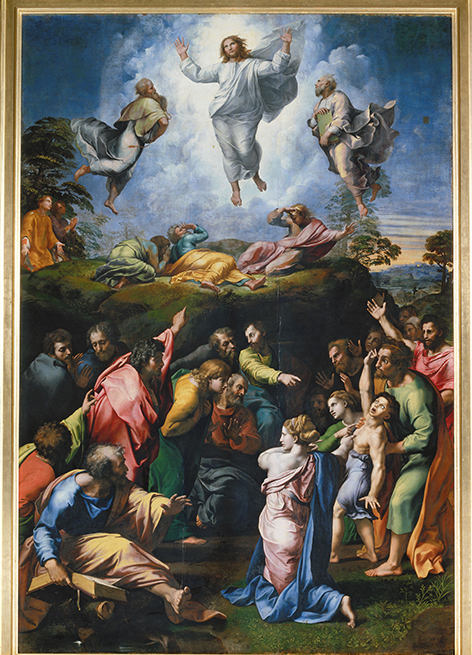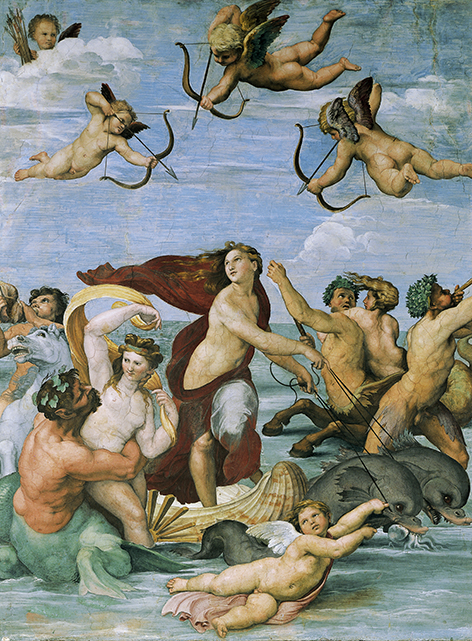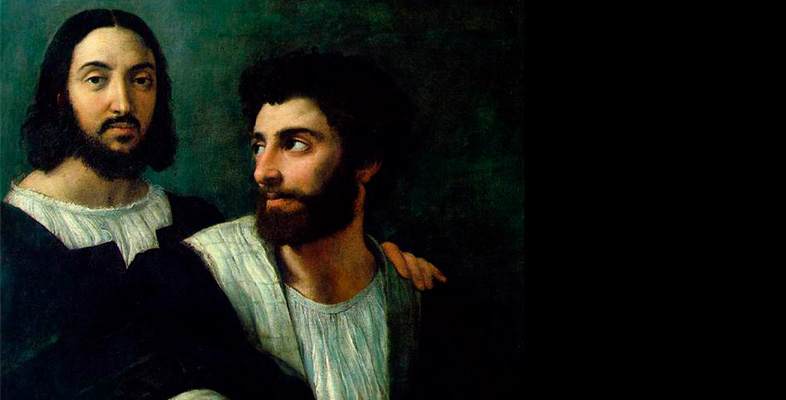2.2 Vasari and the reception of Raphael
This section will look at how Raphael was constructed as the sixteenth-century epitome of elegance, physical beauty and supreme grace.
Vasari’s biography of Raphael
We will begin to examine the formation of Raphael’s identity and its on-going persistence in the present by reading two more or less heroic accounts of his life: an extract from Giorgio Vasari’s Lives, first published in 1550 and reissued in a revised second edition of 1568, and the entry on Raphael from the The Oxford Companion to Western Art.
Activity 1
To familiarise yourself with Raphael’s career and his reception, first read the entry on Raphael [Tip: hold Ctrl and click a link to open it in a new tab. (Hide tip)] from The Oxford Companion to Western Art (Chapman, n.d.).
Then read the extract from Vasari, Lives.
Now write down a few keywords or phrases that are used to describe Raphael and his work in the Oxford Companion which seem to echo Vasari’s account.
Discussion
The words I noted down were ‘social poise’, ‘sweetness’, ‘grace’, ‘prodigy’, ‘sensitivity’, ‘genius’, ‘harmonious’, ‘ideal of classical beauty’.
With these descriptive words in mind, we can begin to consider how Vasari’s biography canonically tied together Raphael’s work, his personality, and the facts of his life and death.
According to Vasari, the face of Christ in the altarpiece of the Transfiguration (Figure 2) was the last work Raphael ever painted. Having put all the ‘force of his art’ into the perfect figure of Christ, Raphael expended his creative powers and was overcome by death. Later on in the Lives Vasari relates that the Transfiguration was placed not for its intended setting in a church but at the head of Raphael’s body lying in state in his own studio. Its display next to Raphael’s corpse seemed to make a not-so-subtle connection between the artist and Christ, in keeping with the idea that Raphael had died after he had come too close to being divine himself. The epitaph written for Raphael’s tomb claimed that Nature had taken Raphael from the earth out of envy, after the artist had shown himself to compete with, or even conquer, Nature itself.

In the surprising passage at the end of the selection from Vasari’s Life, we learn that when Agostino Chigi, a wealthy Sienese banker, commissioned Raphael to work in the Villa Farnesina, the artist arranged for his lover to live there so as to satisfy his sexual passions and find motivation to finish his work. His excessive amorous exertions, Vasari claims, are what brought about the fever that ultimately killed him. This hyper-sexual image of Raphael seems at odds with the gentle and graceful one described earlier in Vasari’s Life, and it may be that the sexually charged subjects of the Farnesina frescoes, exemplified by the nude figure of the sea-nymph Galatea (Figure 3), have somehow infiltrated his account of the artist’s mortal fever. Philip Sohm offers a somewhat different interpretation. As he writes in his study of Caravaggio’s death, ‘a few artists died artistically in ways that bind the mode of dying to the style of painting, where death imitates life … [Some] artists died in the embrace of women or in hot pursuit – Giorgione, Raphael, and Domenico Puligo – and consistently these were artists whose styles were described in terms of feminine attributes: softness, grace, delicacy and tenderness’ (Sohm, 2002, p. 450).

Here it is important to note that the early modern period inherited from antiquity a view of human biology that linked male sexuality with artistic creativity, making men the active agents in procreation and women the passive agents. Women were thought to contribute the inert matter necessary to create a new life, while men’s seed has the power to awaken and animate this matter. Only the male gender, by extension, seemed capable of generating new inventions and creating artistically. Raphael’s hyper-sexualised persona in Vasari’s biography reflects these theories, exaggerating the artist’s sexuality to confirm his unusually potent creative abilities.
